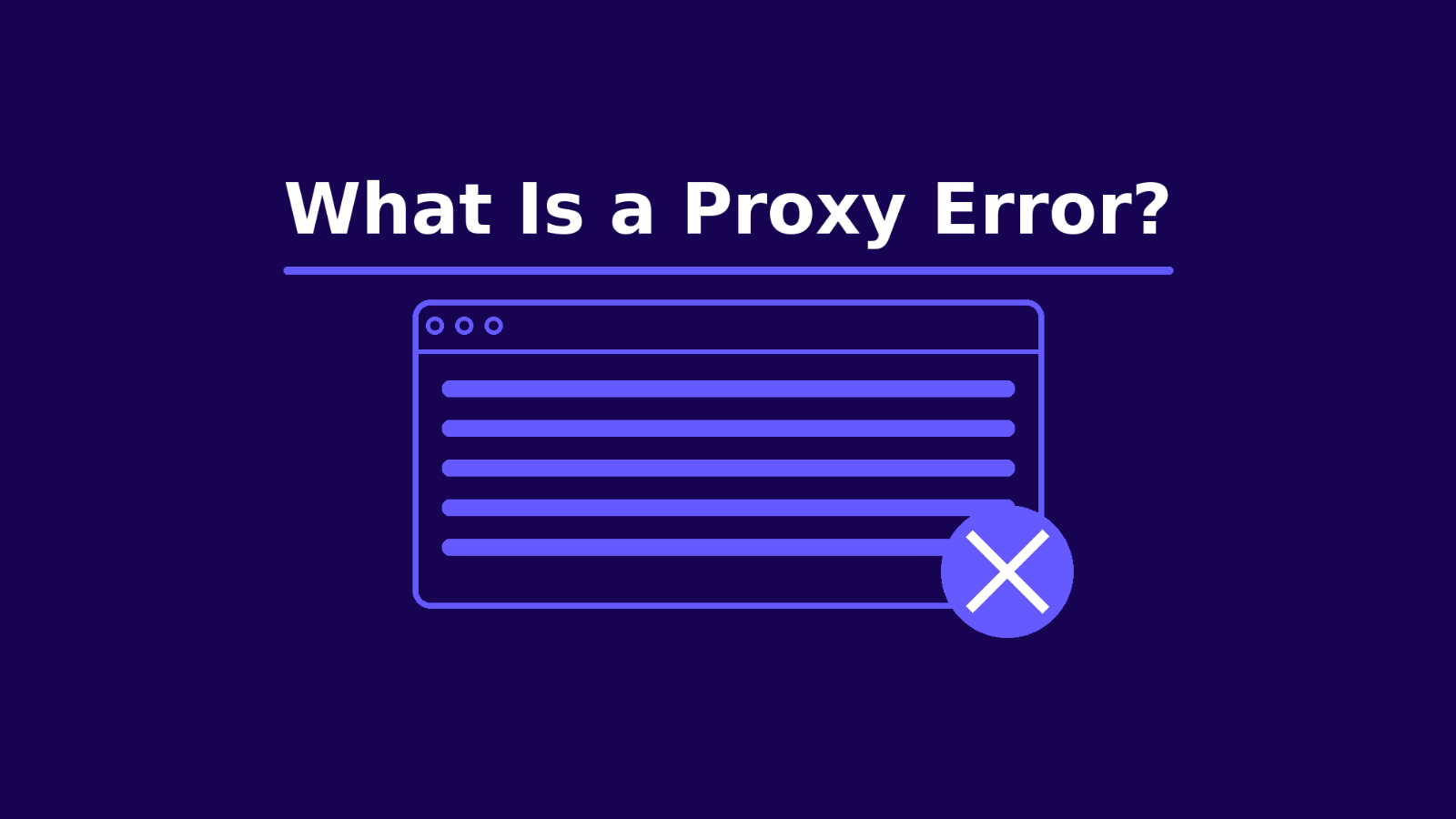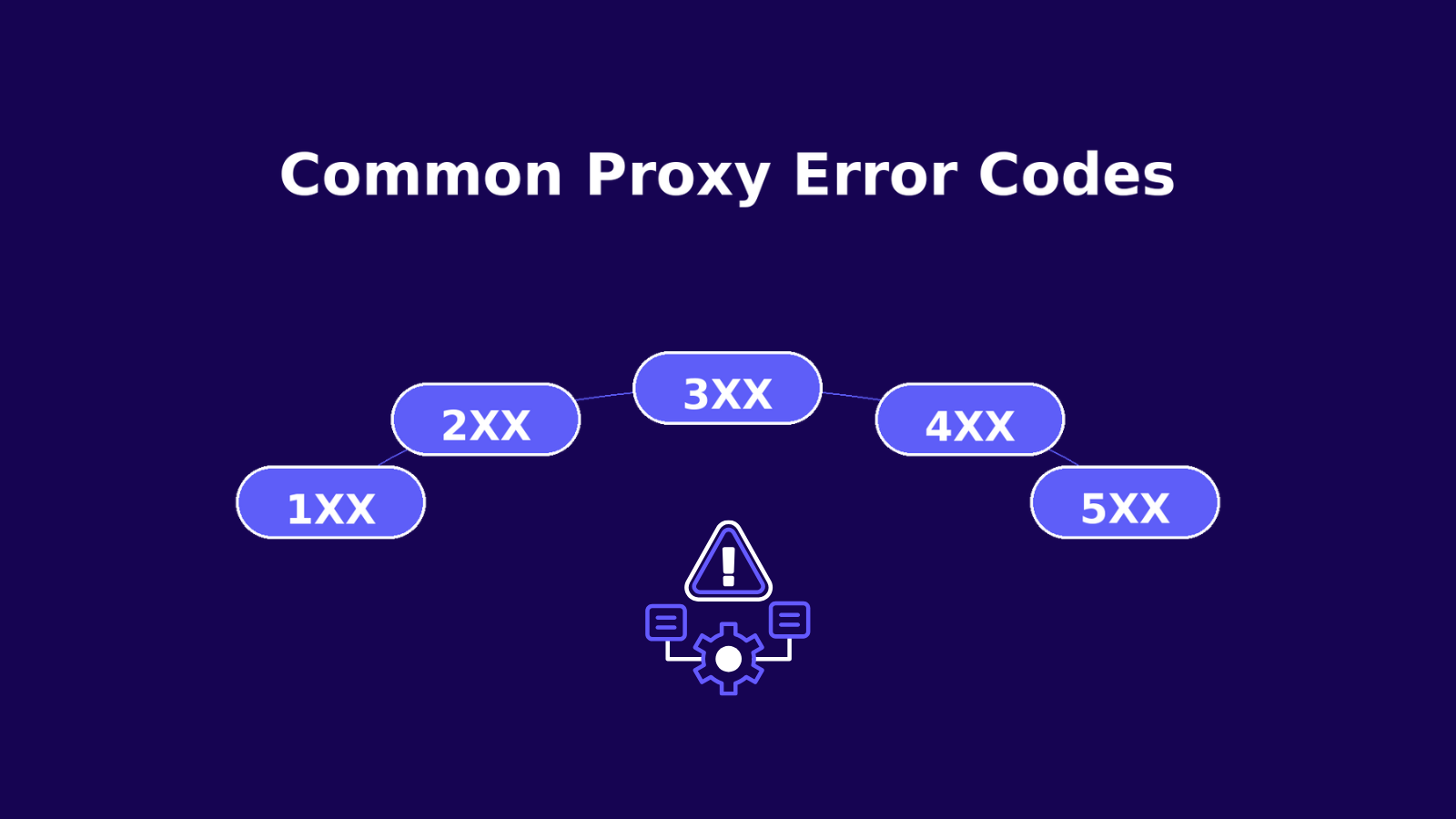
Proxies are brilliant when they work. They hide your IP, route traffic through different regions, and help you automate tasks responsibly. When they hiccup, though, you see cryptic error codes instead of results. This guide translates those codes into plain language and gives you clear, field-tested fixes.
HTTP Proxies are handling HTTP requests towards the internet on behalf of a client. They are fast and very popular when it comes to any kind of anonymous web browsing.
A rotating mobile proxy routes internet traffic via mobile devices, offering unique IP addresses from mobile networks. It is a very good choice for SEO monitoring, social media management, web scraping and ad verification, since it frequently changes IPs to avoid blocks.

A proxy error is the reply you get when a request travels through a proxy and something does not line up. The response can come from the proxy or from the site you wanted to reach. It tells you if the request worked. When it does not, you see an error message and you cannot load the page or API.
HTTP status codes are grouped into five families.
For real problem solving, put most of your attention on 4xx and 5xx codes because they usually mean something needs fixing on your side or the server’s side. We will still discuss the 1xx, 2xx and 3xx groups of status codes below for thoroughness. Consider the 1xx codes as mostly uncommon, mainly informational responses. The 2xx codes will be plain success status codes. The 3xx codes will act as a redirect, telling you the next location to go.

The server looked at your headers and gives the green light to send the body. Through a proxy, this avoids pushing a big upload until everyone agrees it is acceptable.
The connection is moving to a new protocol you asked for with the Upgrade header, like WebSocket. A capable proxy simply carries that switch so both sides can keep talking.
Before the full page is ready, the server shares helpful preload links. Your proxy simply transmits these so the browser can begin retrieving assets sooner.
It all went through well. The request was successful and nothing special occurred along the proxy path.
Your request has been processed, and a new resource has been created on the server. If you want to see where that new resource has been created, check the Location header.
The server accepted the work and will process it shortly, however, you might want to check the task endpoint or continue to wait for it to finish.
Success, but nothing to show for it. You’d usually see this with a DELETE request or an update request that doesn’t return a body.###
Only some part of the file was sent. This is expected on range requests made to resume downloads or play media.
The resource has a new home. Follow the redirect now and update saved URLs so future requests go straight to the right place.
A temporary detour. Most clients follow it automatically. Make sure this matches your goal if you automate requests.
Your cached version is still valid, so there is no need to download. This conserves bandwidth across proxies and CDNs.
Same as 302, except the original method, with body, follows the redirect. This comes in handy when you have just submitted a form.
This is an older permanent move that preserves the original method. Update your stored links to the new version.
The request could not be understood by the server. Common reasons would include a bad url, malformed JSON or form data, or tunneling HTTPS incorrectly through a HTTP proxy.
The destination needs you to sign in or provide a token. This is different from proxy login and usually means site credentials are missing or expired.
The request was understood but blocked. Common triggers are IP reputation, region limits, or odd headers that look suspicious.
Either the URL is broken or the content has disappeared. Double check the URL, and also watch for possible redirects that changed the URL.
The proxy is requesting valid credentials. Verify your username and password or token, the correct endpoint and any restrictions on sessions or traffic.
The server waited and ultimately gave up. Long distances between the proxy server and origin, slow networks or heavy request bodies are usually the cause.
Your request hit a rate limit. The usual cause is a burst of requests from one IP or session.
A general failure on the server side or an upstream hop. Often clears up with a retry or a simpler request.
The server, or the intermediary in the way, is not implementing the required feature.
One of the servers in the chain returned a bad response from another server. This is pretty common when there are multiple hops.
The server or proxy is overloaded or in maintenance. Traffic typically settles after a short while.
You’ll get this response when the server takes too long to finish handling your request and times out.
Hit refresh, then clear cache and cookies for the site. Disable any browser extensions for a minute and try again. If you use a proxy add on, turn it off, turn it back on, and retest.
Choose the appropriate protocol for your task, HTTP, HTTPS, or SOCKS5. Review the host, port, username, and password. A single typo can give the impression that your requests are related to server side problems.
Datacenter IPs are cheap, but super easy to flag. If you continue to see 403 or 429, you should switch to residential or mobile proxies. They come from real devices, have larger and cleaner pools, and are harder to block.
If you regularly engage in web scraping, remember to rotate your IP addresses so that the scraper appears to be a different visitor each time, which will minimize bans and those irritating blocked pages.
Many services include custom hints in their errors. When you reach out, share the target host, timestamp, exit region or IP, and the exact code. Providers can confirm routing problems, raise limits, or suggest a better mobile or residential pool for your use case.
Once you know what each status code is trying to say, finding the real cause gets a lot quicker. They can look intimidating at first, yet most are predictable and easy to sort out with a calm checklist. The right proxy partner makes all the difference, which is why Anonymous Proxies offers reliable residential and mobile pools, smart rotation, and global targeting. If something still gets in the way, our team can review the error details with you and point you to the fastest fix.
@2025 anonymous-proxies.net